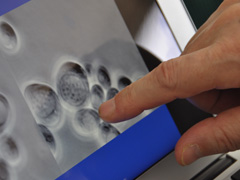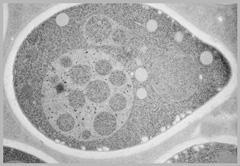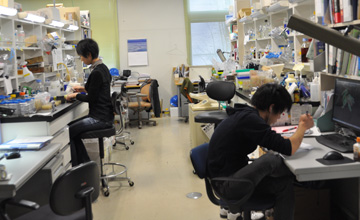
After his success in witnessing autophagy with a microscope, Professor Ohsumi began work on identifying the genes connected with autophagy. Autophagy genes are now known as ATG genes. A total of 18 ATG genes have been discovered.
In 1996, Professor Ohsumi transferred to the National Institute for Basic Biology in Okazaki, Aichi Prefecture, which has the necessary staff and equipment to elucidate the functions of the proteins that are encoded by the ATG genes. Several years later, with the assistance of research workers at the Institute, Professor Ohsumi was able to show autophagy to be one of the most basic functions of the cells of many plants and animals. In recognition of this string of successes, he was awarded the Fujihara Award, the Japan Academy Prize and the Asahi Prize between 2005 and 2008. He also received the Kyoto Prize for Basic Sciences in 2012.
Finally, Professor Ohsumi offered this message to the next generation:
"Today's young people approve of 'research in the service of humanity,' while maintaining a steady and conservative outlook. That calls for research on humans rather than on yeasts or mice. However, you can answer the most basic and important questions about the nature of life through yeasts. My research was able to explain autophagy precisely because I was working on yeasts and could observe them under an electron microscope. Basically, it's not easy to define what will serve humanity - nuclear power is a good example. So my message to all of you, who want to pursue a career in science, is to do what no one else is doing, and do what you find truly interesting. Research isn't easy. However, if you're really drawn to a subject and you're interested in it, you'll certainly overcome all the obstacles, even if, say, your work isn't appreciated for a time. You only live once. Others aren't interested in trivia. In the end, you have to want to taste the pleasures of success after all is said and done."

Autophagy can be seen in every single organism, from plants to human beings. It is one of the most basic functions of cells. It has become clear that it is not simply a response to starvation, but also contributes to a variety of physiological functions: inhibiting cancer cells, inhibiting aging, eliminating pathogens and cleaning the insides of cells.
. Any information published on this site will be valid in relation to Science Tokyo.














